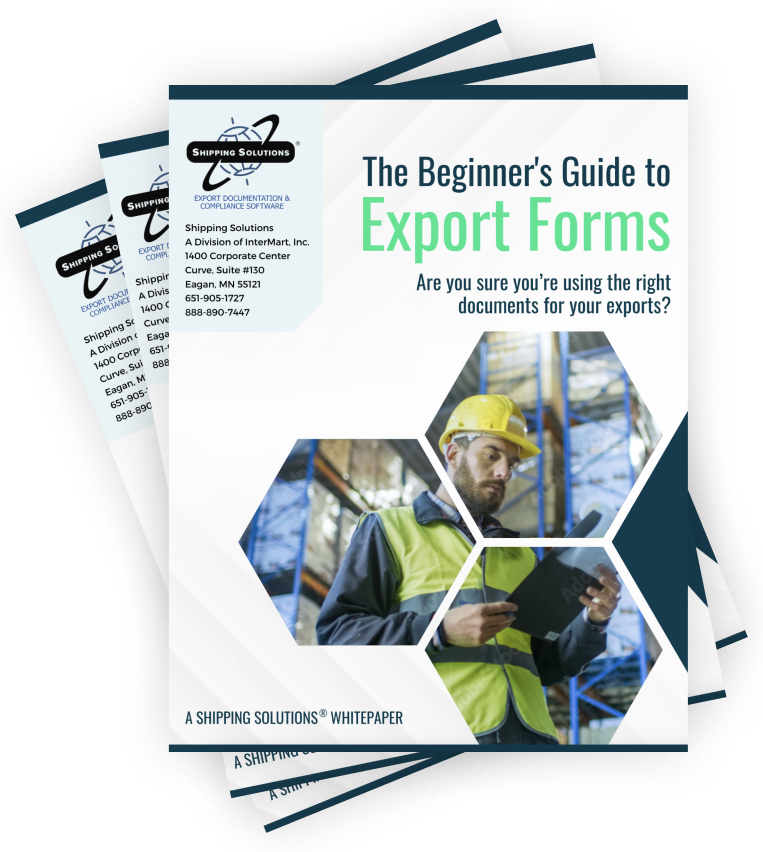The International Trade Blog Export Forms
CAFTA-DR: Central America-Dominican Republic Free Trade Agreement & Rules of Origin
On: June 18, 2025 | By:  David Noah |
8 min. read
David Noah |
8 min. read
 The Central America-Dominican Republic-United States Free Trade Agreement (CAFTA-DR) provides duty-free trade on most goods traded between the United States, Costa Rica, Dominican Republic, El Salvador, Guatemala, Honduras and Nicaragua.
The Central America-Dominican Republic-United States Free Trade Agreement (CAFTA-DR) provides duty-free trade on most goods traded between the United States, Costa Rica, Dominican Republic, El Salvador, Guatemala, Honduras and Nicaragua.
CAFTA-DR went into effect for the United States, El Salvador, Guatemala, Honduras and Nicaragua in 2006. The Dominican Republic joined this monumental agreement in 2007, followed by Costa Rica in 2009. CAFTA-DR is a historic and comprehensive free trade agreement (FTA) that removed barriers to trade, eliminated tariffs, opened markets and promoted investment. By encouraging economic growth, this cutting-edge pact expanded U.S. opportunities in important regional markets.
U.S. manufacturers, workers, farmers and ranchers benefit from the FTA's open-market provisions. It not only reduces barriers for U.S. exports but also requires participating countries to implement legal and business reforms that foster development and investment.
History of CAFTA-DR
Prior to the free trade agreement, most exports from the Dominican Republic and Central America to the United States benefited from duty-free treatment, primarily as a result of the Caribbean Basin Initiative (CBI). However, these countries often imposed high tariff and non-tariff barriers for U.S. exports and imposed extra restrictions on U.S. businesses.
Not only did CAFTA-DR remove those trade barriers, it provided greater transparency for government actions and rule-making, strengthened the rule of law and improved the protection and enforcement of intellectual property rights.
According to a CAFTA-DR trade review, there was a 74% increase in U.S. exports to this region of the world from 2005, the year before the agreement went into effect, to 2013. The trade agreement clearly had a positive impact on U.S. exports.
CAFTA-DR: How to Declare a Good Is Originating

Under CAFTA-DR, most goods traded between the United States and participating Central American countries and the Dominican Republic are eligible for duty-free treatment. To receive tariff-free treatment, your products must meet the relevant rules of origin. The importer is responsible for making the claim and should work with the U.S. exporter to ensure that the U.S. good qualifies. The exact process is determined by the individual signatory countries. While there is no specific certificate of origin form that must be used, there is a commonly used CAFTA-DR Certificate of Origin, which you can download for free here.
The importer may make a claim for preferential tariff treatment using one of two options:
- Option 1: A written or electronic certification by the importer, exporter or producer;
- Option 2: The importer's knowledge that the good is originating, including reasonable reliance on information in the importer's possession that the good is originating.
CAFTA-DR: Understanding the Rules of Origin
The rules of origin for the CAFTA-DR were largely modeled on the former North American Free Trade Agreement (NAFTA, now the USMCA) and the U.S.-Chile Free Trade Agreement.
How to Read the CAFTA-DR Rules of Origin
Rules of origin are written in terms of the Harmonized System (HS) of Tariff Classification.
The HS classification system uses six- to 10-digit codes to identify goods. The first six digits of an HS number are harmonized among the majority of the world's countries. The last four digits are unique to each country. The vast majority of the product-specific rules of origin under the CAFTA-DR use an HS classification number.
Before you can interpret the rules of origin, you need to ensure your goods are properly classified. For help, read our free guide, Classifying Your Products for International Trade, or give Shipping Solutions Product Classification Software a try.
A rule of origin may include:
- A change in tariff classification (also called a tariff shift);
- A regional value-content requirement;
- Both a change in tariff classification and a regional value content requirement.
It is necessary to refer to the rule associated with the product being exported. Regional value content can only be applied when it is allowed under a product-specific rule. You can view the product specific rules of origin (Annex 4.1) online.
Regional Value Content
The Regional Value Content test allows the good to qualify in one of two ways: using either the build-down or build-up method.
Build-Down Method
Regional Value Content (RVC) = ((Adjusted Value – Value of Non-Originating Materials)/Adjusted Value) x 100
Build-Up Method
Regional Value Content (RVC) = (Value of Originating Materials/Adjusted Value) x 100
For non-originating materials used in the production of a good, the following expenses may be deducted from the value of that material in accordance with Article 4.4:
- The costs of freight, insurance, packing and all other costs incurred in transporting the material within a party’s territory or between territories of two or more parties to the location of the producer.
- The cost of waste and spoilage resulting from the use of the material in the production of the good, less the value of renewable scrap or by-product.
- Duties, taxes and customs brokerage fees on the material paid in the territory of one or more of the parties other than duties and taxes that are waived, refunded, refundable or otherwise recoverable, including credit against duty or tax paid or payable.
- The cost of originating materials used in the production of the non-originating material in the territory of a party.
Note: The RVC percentage requirement ranges from 25% to 65%, so it is important that you review the specific requirements stated in Annex 4.1.
Learn more about using the tariff shift method and RVC method in our free guide, How to Qualify for a Free Trade Agreement (FTA).
Other Factors to Consider
A thorough reading of Chapter 4 of the CAFTA-DR is necessary to determine the origin of a product, and thus, whether it is eligible for preferential duty treatment. However, below are some of the factors — beyond the product-specific rules of origin—which may be considered in making a determination of origin.
De Minimis Rule
All non-originating materials used in the production of the finished good that do not undergo a change in tariff classification are considered originating if the value of all those non-originating materials does not exceed 10% of the adjusted value of the good, i.e., the de minimis amount. This is provided that the good meets all other applicable qualification criteria set forth in Chapter 4.
The de minimis rule does not apply when using the build-down method described above to calculate the RVC. The value of all non-originating materials used in the production of a good must be included in the calculation.
For textiles and apparel, refer to Article 3.25.7 and Annex 4.1 of the CAFTA-DR for the relevant de minimis rule.
There are some cases where the de minimis rule does not apply. To review these exceptions, go to Annex 4.6 of the CAFTA-DR.
Accumulation
Originating goods or materials from one or more countries that are party to the CAFTA-DR that are incorporated into a good in the territory of another party to the Agreement are considered originating materials of the party where the incorporation takes place.
A good qualifies as originating if produced in the territory of one or more of the countries participating in CAFTA-DR provided that the good qualifies under the rules, as discussed above, of the CAFTA-DR.
Fungible Goods and Materials
Fungible goods or materials refers to goods or materials that are interchangeable for commercial purposes and whose properties are essentially identical.
The CAFTA-DR allows importers to claim a fungible good or material as originating where the importer, exporter or producer has either physically segregated each fungible good or material or used any inventory management system that is recognized in the Generally Accepted Accounting Principles or is otherwise accepted by the party where the production is performed. Examples of inventory methods include: averaging, last-in first-out (LIFO), or first-in first-out (FIFO). Note that physical separation of the goods is not necessary but may be used for each fungible good or material.
Indirect Materials
Indirect materials are considered to be originating materials regardless of where they are produced. An indirect material is defined as a good used in the production, testing or inspection of a good but not physically incorporated into the good, or a good used in the maintenance of buildings or the operation of equipment associated with the production of a good, including:
- Fuel and energy
- Tools, dies and molds
- Spare parts and materials used in the maintenance of equipment and buildings
- Lubricants, greases, compounding materials and other materials used in production or used to operate equipment and buildings
- Gloves, glasses, footwear, clothing, safety equipment and supplies
- Equipment, devices and supplies used for testing or inspecting the good
- Catalysts and solvents
- Any other goods that are not incorporated into the good but whose use in the production of the good can reasonably be demonstrated to be a part of that production
How to Create the Documents You Need
Shipping Solutions software makes it easy to create accurate export documents, including the CAFTA-DR Certificate of Origin, as well as more than two dozen other export forms including certificates of origin for Chile, Colombia, Korea, Panama, Peru and the U.S.-Mexico-Canada Agreement (USMCA). Click here to register for a free online demo of the software.
Or you can download free PDF templates for CAFTA-DR and other FTAs from our library of export forms.
Like what you read? Subscribe today to the International Trade Blog to get the latest news and tips for exporters and importers delivered to your inbox.
This post was originally written by Sue Senger and published in September 2006. It has been updated to include current information, links and formatting.

About the Author: David Noah
As president of Shipping Solutions, I've helped thousands of exporters more efficiently create accurate export documents and stay compliant with import-export regulations. Our Shipping Solutions software eliminates redundant data entry, which allows you to create your export paperwork up to five-times faster than using templates and reduces the chances of making the types of errors that could slow down your shipments and make it more difficult to get paid. I frequently write and speak on export documentation, regulations and compliance issues.



